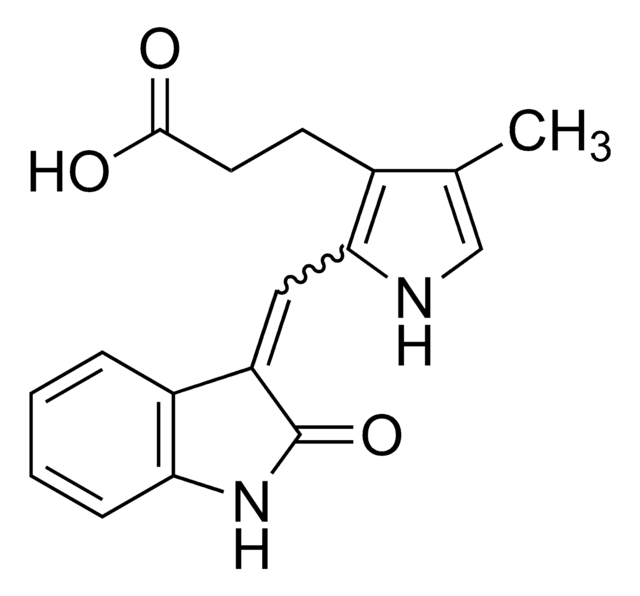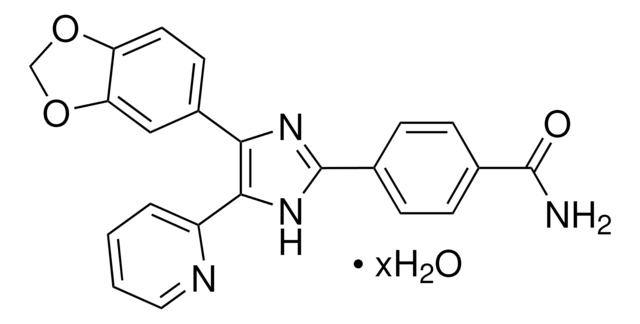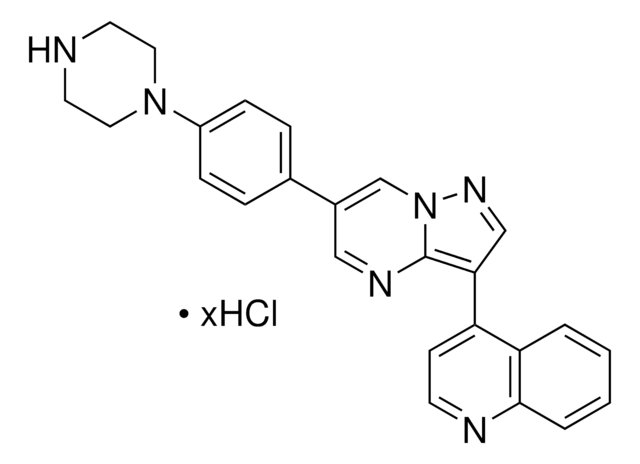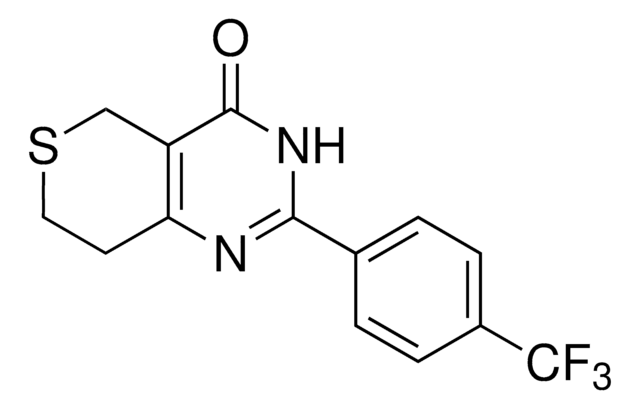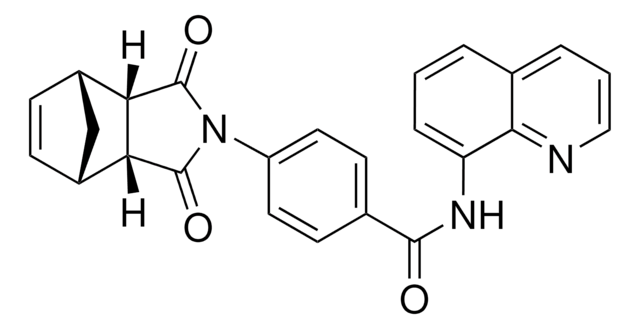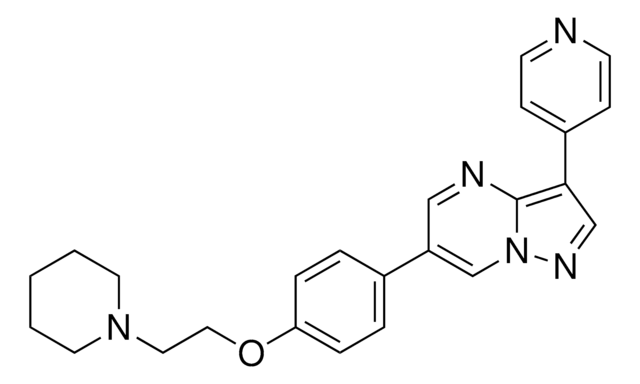572630
SU-5402
≥95% (HPLC), lyophilized solid, FGFR1 inhibitor, Calbiochem
Synonym(s):
SU5402, 3-[3-(2-Carboxyethyl)-4-methylpyrrol-2-methylidenyl]-2-indolinone
About This Item
Recommended Products
Product Name
SU5402, SU5402, CAS 215543-92-3, is a cell-permeable, reversible, and ATP-competitive inhibitor of the tyrosine kinase activity of FGFR1 (IC₅₀ = 10-20 µM in the presence of 1 mM ATP).
Quality Level
Assay
≥95% (HPLC)
form
lyophilized solid
manufacturer/tradename
Calbiochem®
storage condition
OK to freeze
protect from light
solubility
DMSO: 25 mg/mL
shipped in
ambient
storage temp.
2-8°C
InChI
1S/C17H16N2O3/c1-10-9-18-15(11(10)6-7-16(20)21)8-13-12-4-2-3-5-14(12)19-17(13)22/h2-5,8-9,18H,6-7H2,1H3,(H,19,22)(H,20,21)/b13-8-
InChI key
JNDVEAXZWJIOKB-JYRVWZFOSA-N
General description
Biochem/physiol Actions
Fibroblast growth factor receptor 1 (FGFR1)
Warning
Reconstitution
Other Notes
Legal Information
Storage Class Code
11 - Combustible Solids
WGK
WGK 1
Flash Point(F)
Not applicable
Flash Point(C)
Not applicable
Certificates of Analysis (COA)
Search for Certificates of Analysis (COA) by entering the products Lot/Batch Number. Lot and Batch Numbers can be found on a product’s label following the words ‘Lot’ or ‘Batch’.
Already Own This Product?
Find documentation for the products that you have recently purchased in the Document Library.
Our team of scientists has experience in all areas of research including Life Science, Material Science, Chemical Synthesis, Chromatography, Analytical and many others.
Contact Technical Service